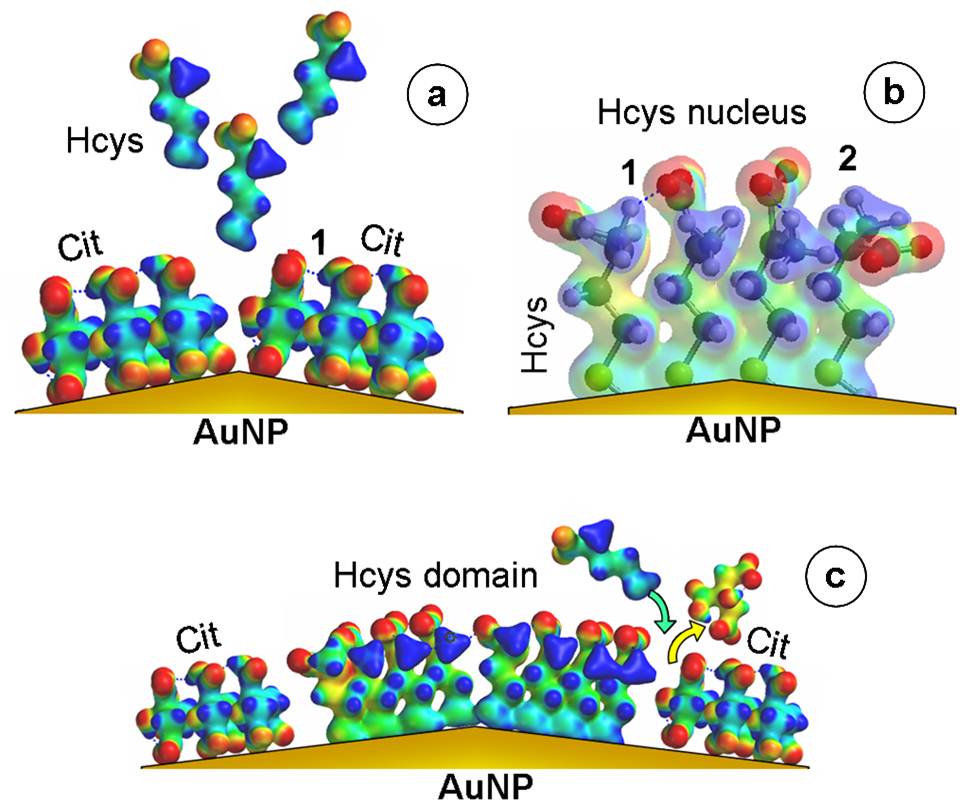4. Rapid functionalization of metal nanoparticles by moderator-tunable ligand-exchange process for biosensor designs
Publication: M. Stobiecka and M. Hepel, Sensors and Actuators B: Chemical, "Rapid functionalization of metal nanoparticles by moderator-tunable ligand-exchange process for biosensor designs", 149 (2010) 373-380.
A new method for rapid functionalization of metal nanoparticles based on a moderator-tunable 2D nucleation and growth of ligand-exchange domains has been developed for the design of biosensors with nanoparticle-enhanced sensory films and other applications. The proposed functionalization of gold nanoparticles proceeds through the nucleation and avalanche growth of ligand-exchange domains in the self-assembled monolayer film on a gold nanoparticle surface. The nucleation and growth is controllable by a moderator molecule. The experimental system described presents a ligand-exchange process at citrate-capped gold nanoparticles, with homocysteine acting as the incoming ligand and glutathione as the moderator. The kinetics of the nucleation and growth driven ligand-exchange is characterized by a sigmoidal switching function and differs from that of the usually observed Langmuirian pseudo-first-order process corresponding to the random place-exchange. The ultra-fast functionalization process was monitored using resonance elastic light scattering (RELS) spectroscopy and confirmed by UV–vis plasmonic band absorbance measurements.

Graphical abstract